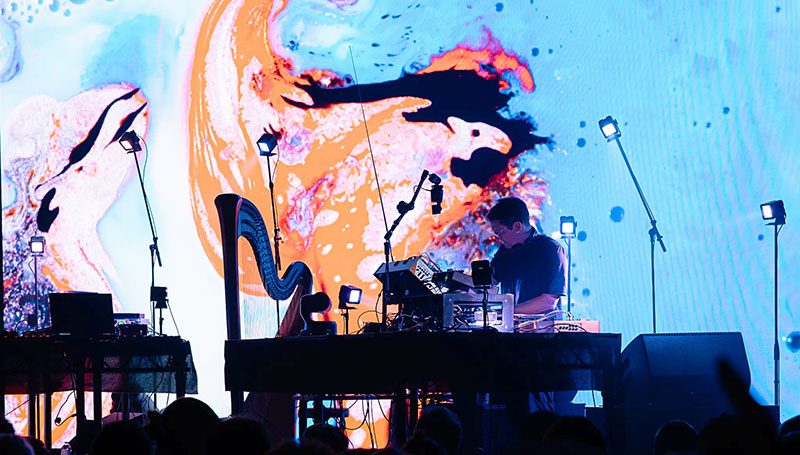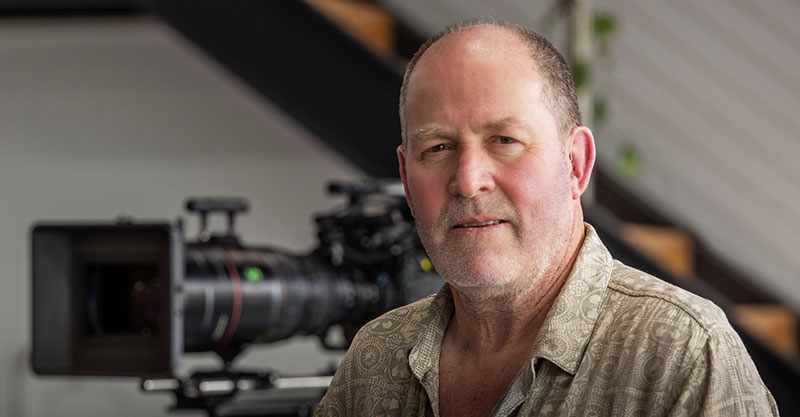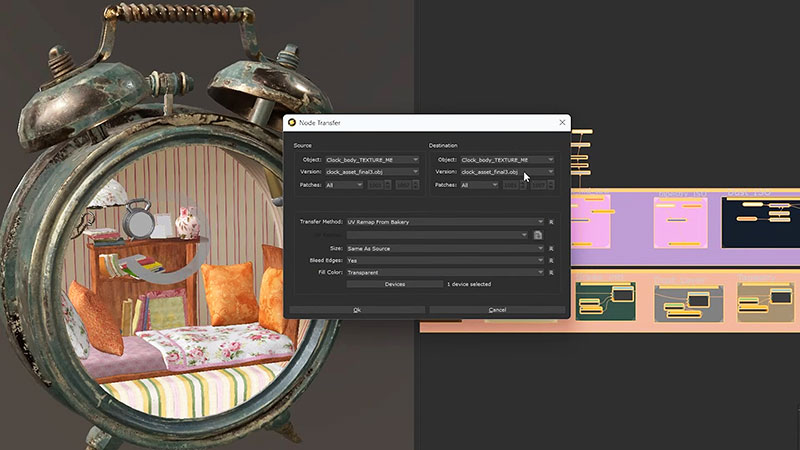The Fuse team worked with Matrox gear to quickly learn ST 2110 signal routing and orchestration, video conversion and remote control workflows for the biggest venue on Earth.
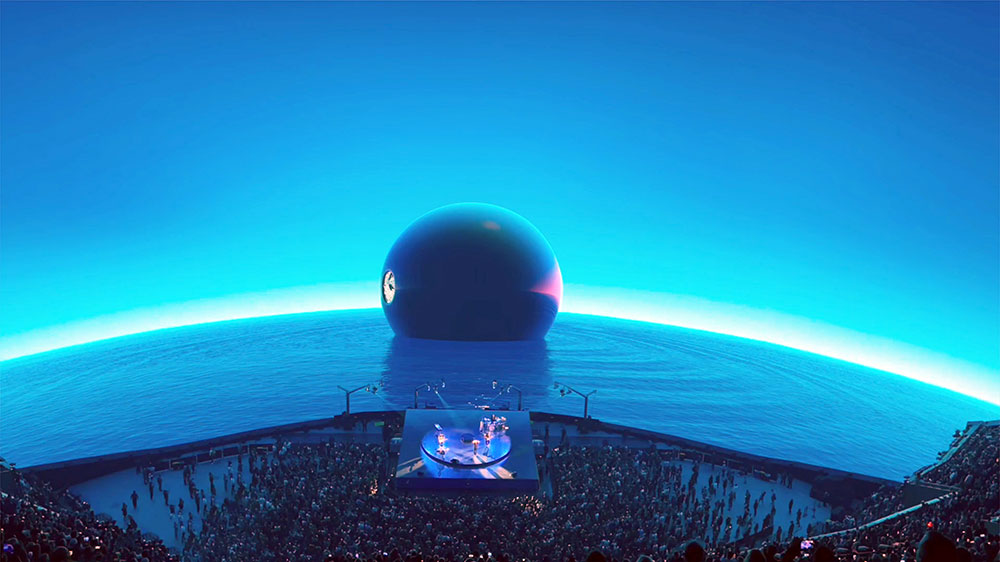
Sphere in Las Vegas is a one-of-a-kind live entertainment venue. Technologically overwhelming, the exterior is covered with 580,000 sq ft of LED displays that show themed content, and inside, the audience sees a 160,000 sq ft, 16K wraparound LED canvas with 256 million rendered pixels – the largest and highest resolution LED screen in the world. That screen combined with a spatial audio system and 4D physical effects add up to an immersive audio and video experience unlike any other.
Irish band U2 launched the Sphere stage with their show ‘U2:UV Achtung Baby Live’ in September 2023. Behind-the-scenes production was handled by Fuse Technical Group, an accomplished multimedia system designer and integrator.
Fuse’s speciality is video and lighting systems, including planning and design, for touring acts, TV and film productions, corporations, live events, exhibitions and installations around the world. Integrations they deliver range from LED configurations, media servers, control systems, projection mapping, custom flypacks, live video production, interactive tools and others, supported by experienced project managers.
U2 is known for complex and impressive live performances, especially those involving video. To help achieve a show matching the band’s reputation and justifying Sphere’s capabilities, Fuse and U2 started by developing a video playback system capable of handling 16K resolution, and augmenting and moving live input across 16K – all over IP, running on a complete SMPTE ST 2110 backbone, or IP router network. This system would drive all the video elements of the show.
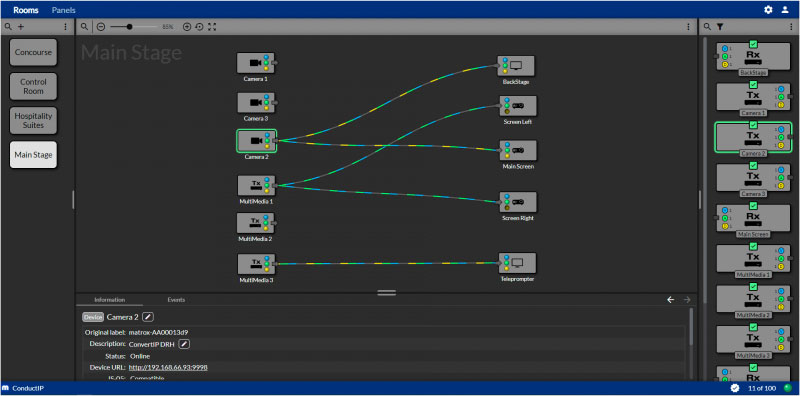
Matrox Video ConductIP
Working with ST 2110
Properly customising the system to meet the client’s expectations and take the best advantage of Sphere’s build involved learning to work with SMPTE ST 2110.
The content feeding the screens is ST 2110 compatible at 4K DCI (4096 x 2160), and operators needed 26 4K outputs to drive the system and handle all demands, such as putting live input anywhere on the LED canvas and moving it to wherever it needs to be. Sometimes the audience might even see live input being ‘chased up’ the Sphere. That meant building a system with almost unlimited capabilities for a live show, on a massive scale.
“Working with ST 2110 is very different from working with SDI. ST 2110 is fairly limitless in distribution, for example, and can be used in a lot more remote locations with dark fibre. But it has its challenges,” said Ryan Middlemiss, Fuse Technical Group’s director of media servers. “For example, you can't just plug in a monitor and look at a source.”
Fuse experts already knew how to do all the networking and data routing and how to transmit all the signals. But the SMPTE ST 2110 transport was unfamiliar – ST 2110 carries video, audio and ancillary data as separate streams over an IP network, and each stream has all information needed for that media type, including timing information. To be ready to work in that environment, Fuse technicians drilled down into ST 2110 and NMOS, along with how to anticipate and handle issues that could arise during the show.
Finding the Equipment
After defining the system’s demands – which included support for 12G SDI and 4K DCI, low latency, 25G network speeds, NMOS routing and control, and support for 2022-7 redundancy – and researching likely manufacturers, Ryan found that only a small percentage of available converters fit the requirements. He narrowed down his product options, and chose Matrox Video. As well as checking out the hardware, Ryan made a point of getting to know who he would be dealing with, and that experience weighed in favour of Matrox.
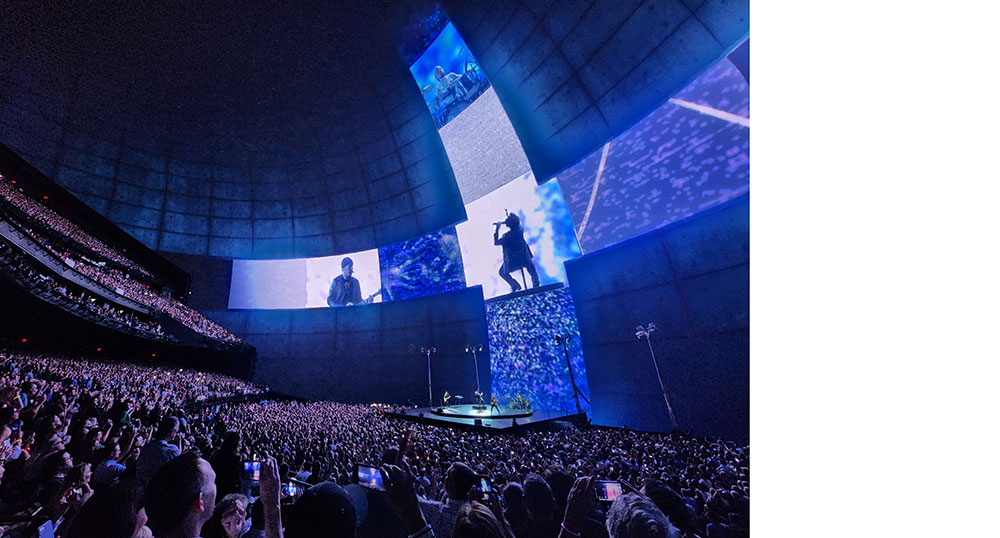
Image: James Dugas - U2 performing at Sphere in Las Vegas on 11 October 2023
“I really look into the people that I’m going to buy from – who they are and how we get along. Ultimately, the most important part of a purchase is the support behind the product,” he said. For instance, Matrox Video’s ST 2110 training and expertise helped Ryan and his team get up to speed quickly. The company’s responsiveness and engineering support also proved crucial to the project’s success, especially when last-minute changes arose.
ST 2110 Workflows at the Venue
The show needed ST 2110 hardware with full 4K DCI video support, along with 12G for monitoring and failover. The Fuse team needed to consider the complete workflow when designing the production system, including signal routing and orchestration, video conversion, and remote control for operators and event technicians.
Matrox ConductIP was the first product Fuse purchased after it accepted the U2/Sphere project, along with some ConvertIP units and a media server that outputs ST 2110. Fuse uses ConductIP to route and orchestrate ST 2110 sources on its internal network. Although initially unfamiliar with Matrox Video’s new IP hardware and software, Ryan was able to learn how to route NMOS signals in only a few hours.
To address ST 2110 conversion tasks, Fuse deployed 23 Matrox ConvertIP DSS dual-channel SFP SDI-to-IP devices to convert high-resolution SDI from the media servers into ST 2110 and deliver content to the IP video backbone for display on the LEDs.
Fuse selected ConvertIP for its 12G SDI and 4K DCI support, low latency and 25G speeds. “When we made an on-site decision to drop the refresh rate to a level that wasn’t supported, Matrox Video stepped up immediately,” Ryan said. “Their team actually rewrote the firmware and sent it to us on time, and it worked on the first try.”
Remote Operation and Control
The live production system Fuse put together has 30 computers on it, with one programmer and two technicians sitting at workstations in the control room handling all the video for the show. Fuse wanted the operators to be able to see and control multiple monitors and multiple computers at the same time – all from one remote workstation with one keyboard, mouse and monitor.
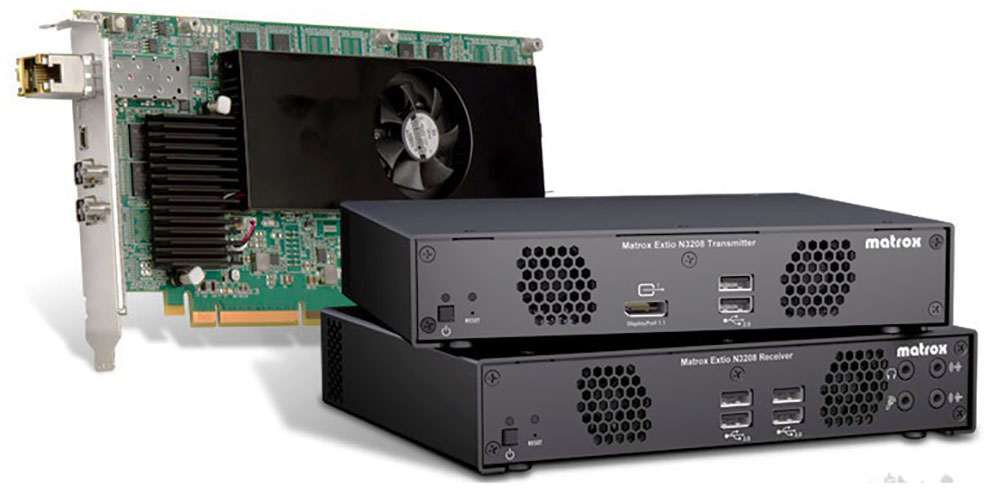
Matrox Extio 3 IP KVM extender
At the operator desks, Fuse installed Matrox Extio 3 IP KVM extenders, which are specifically made for this kind of scenario – when one user needs to work on more than one system, or when different users need to access the same computer to work from different locations. They consist of a transmitter and receiver pair – a transmitter unit is located next to the computer system, and the receiver unit at the remote user station.
For Sphere, the Extio 3 deploys 32 transmitters and 10 receivers, and makes it possible to move among four computers at once. Operators drag the mouse, and the keyboard goes with it. The transmitter unit captures the I/O signals from the computer, the KVM extender encodes these signals and, in this case, uses internet protocol to transport them as network packets to the KVM receiver unit, which decodes the signals and powers the remote peripheral devices – displays, keyboard, mouse.
No Time to Spare
“Extio 3 means the technicians and the programmer can be as efficient as possible – twice as efficient as with extenders that handle dual monitors. When there's no time to spare during a show, that efficiency is extremely valuable, and we have encountered no technical issues with the Extio 3,” Ryan said.
“It took five years to build the Sphere, but we had only five months from the initial contact to deliver an entirely reliable system for U2 in time for the first show – using a standard and a workflow we weren’t accustomed to. It was no small feat to do something like that in such a compressed timeline.” video.matrox.com





